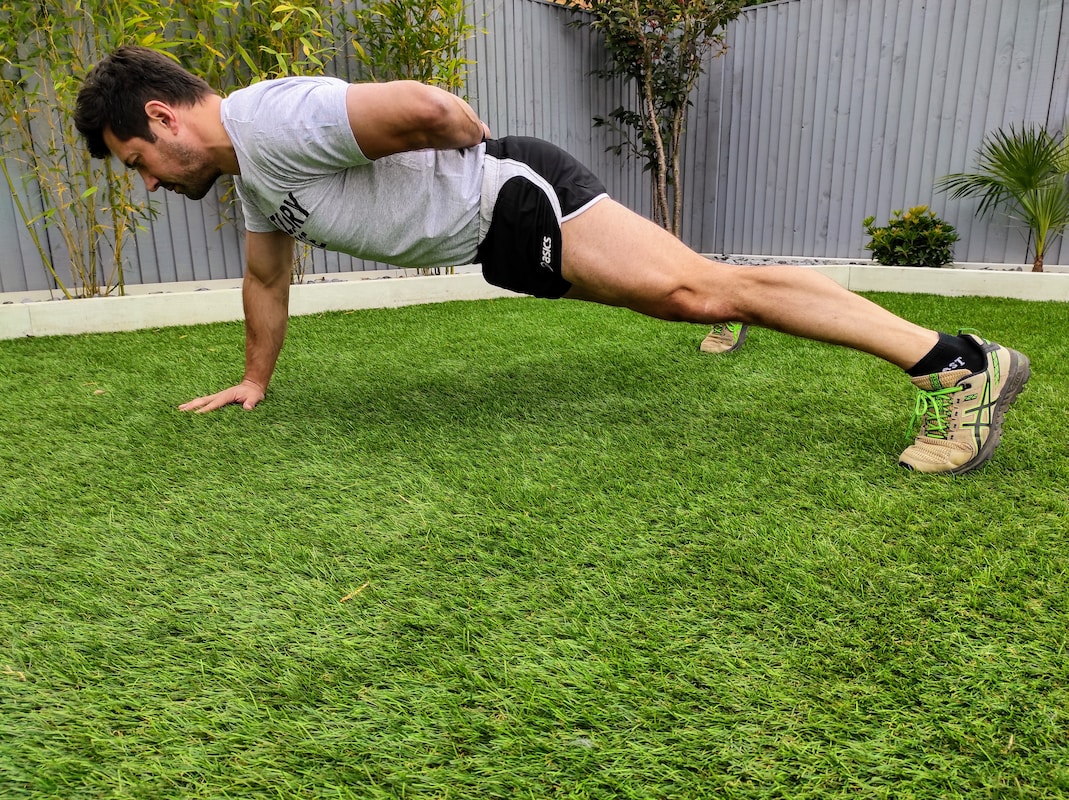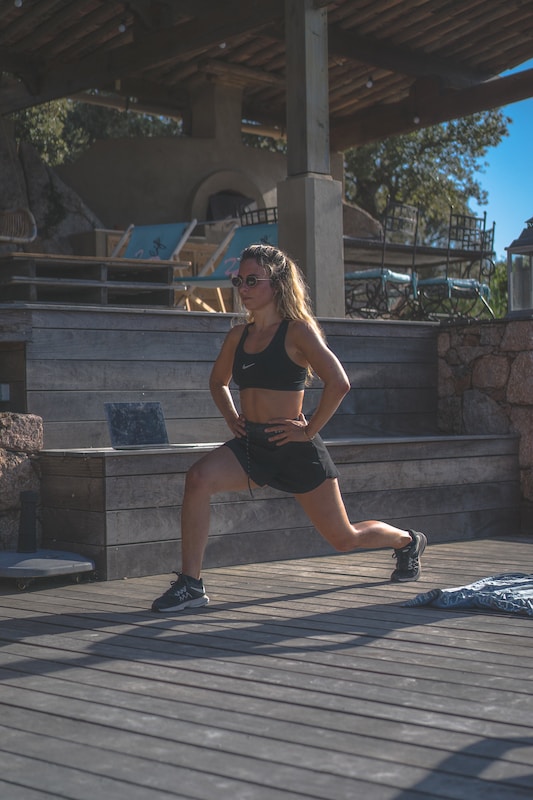Did you know that only about 23% of adults in the United States meet the guidelines for aerobic and muscle-strengthening activities? Daily exercise, simple exercises, workout routine, training plan, and flexibility exercises are not just a trend; they’re crucial components of a healthy lifestyle.
Essential Everyday Exercises

Core strengthening exercises are crucial for targeting the abdominal muscles, hamstrings, and glutes, enhancing stability and posture, and improving overall body strength. By engaging in simple exercises like planks, sit-ups, or leg raises, you can effectively work your core muscles.
These exercises help to build a strong foundation for your body. For example, when you do planks, you’re not only working your abs but also engaging the muscles in your back and shoulders. This helps improve overall posture and reduce the risk of back pain.
Sit-ups are simple exercises performed on the floor in sets, targeting the abdominal area while also engaging other muscle groups such as hip flexors. These simple exercises promote better balance and coordination by requiring multiple muscle groups to work together.
1. Walking

Let’s start with the most straightforward aerobic exercise – walking. Walking is low impact yet spikes your heart rate enough to improve cardiovascular fitness.
Aim for a brisk 30-60 minute walk at least 5 days a week. You can break this up into smaller 10-15 minute sessions if needed. To progress, add intervals of fast walking or incorporate hills.
Walking strengthens muscles while burning calories. It can be done anywhere without equipment, making it easy to fit into a daily routine. Just be sure to use proper walking posture.
2. Bodyweight Squats

For building lower body and core strength, squats are unmatched. They tone glutes, thighs and calves while engaging your core muscles for stability.
Start with basic bodyweight squats – feet shoulder-width apart, lower hips back into a seated position, keeping knees behind toes. Aim for 3 sets of 12 reps.
To advance, try variations like sumo squats, plyo squats with a jump or pistol one-legged squats. Add weights once mastering bodyweight form.
3. Push Ups

This versatile exercise works numerous upper body muscle groups at once – chest, shoulders, triceps and more. Start on your knees doing inclined push ups to build strength.
Work up to 3 sets of 8-12 reps of standard push ups with hands directly under shoulders. For added challenge, elevate feet on a box. Push ups build immense upper body strength.
4. Plank

The plank tones your entire core – front abs, obliques and lower back. Hold a high plank with hands directly under shoulders, keeping body in straight line.
Start with holding for 30 seconds, building up to 3 sets of 60 second planks. Engage core muscles to prevent sagging hips. Optionally lift one leg at a time to advance the move.
5. Lunges

Lunges work the glutes, quads and hamstrings while improving balance and core stability. Step forward with one leg, lowering until both knees are at 90 degree angles.
Do 10-15 reps per side for 2-3 sets. Optionally hold weights in each hand to intensify the move. Try reverse lunges by stepping back or side lunges too.
6. Pull Ups

The pull up works back, shoulder and arm muscles, improving grip strength too. Use an assisted pull up machine or resistance bands to help lift your body up to the bar.
Aim for 3 sets of max reps based on your strength levels. Work toward unassisted pull ups. Vary grips between wide, narrow, underhand to hit back muscles from varied angles.
7. Yoga Flow

Incorporate some yoga flows like sun salutations into your routine for flexibility training. Flow through poses like downward dog, cobra and warrior poses holding each for a few breaths.
Practice for 10-15 minutes daily. Yoga improves joint health, mobility and mind-body awareness. End your session with restorative poses like child’s pose.
Putting Together Your Routine
Structure your workout routine depending on your goals and schedule:
- Strength focus: Squats, push ups, planks, pull ups
- Cardio focus: Walking with 1-2 strength moves like lunges
- Balanced full-body: 1 exercise from each category – walk, squat, plank, yoga flow
- Beginner: Start with 1 set of easier progressions, allowing time to build capacity
The key is consistency – do some form of exercise daily even if brief. Gradually increase duration and difficulty as your fitness improves. Listen to your body and recover properly between sessions.
Sample Schedule:
- Monday: Lower body – squats, lunges
- Tuesday: Upper body – push ups, pull ups
- Wednesday: Cardio – 45 min walk
- Thursday: Core and flexibility – plank, yoga
- Friday: Total body circuit – 1 set each of 7 exercises
- Saturday: Rest day
- Sunday: Light cardio – 30 min walk
Adapt this schedule to fix your needs and abilities. The goal is creating a sustainable lifelong exercise habit.
Benefits of Daily Exercise
Physical Health
Regular exercise is crucial for maintaining good health. When you do exercises every day, your body becomes stronger and more resistant to illnesses. It helps in keeping your heart healthy, reducing the risk of diseases like diabetes, high blood pressure, and obesity. For instance, doing exercises such as jogging, cycling, or swimming can improve cardiovascular health by strengthening the heart muscle.
Moreover, daily workouts, including simple exercise, also aid in maintaining a healthy weight. Activities like walking or dancing help burn calories and prevent excess weight gain. This is important because being overweight can lead to various health issues such as joint pain and breathing difficulties.
Mental Well-being
Daily exercise not only benefits the body but also contributes to mental well-being. Engaging in physical activities releases endorphins that act as natural mood lifters. These feel-good chemicals help reduce stress levels which are common among both children and adults due to school or work pressures.
Furthermore, regular workouts enhance mental clarity by promoting better sleep patterns which leads to improved focus during the day.
Longevity
There is a strong link between daily exercise and longevity; people who engage in regular physical activity tend to live longer lives compared to those who don’t prioritize exercise. By including different types of exercises into their routines – from strength training with weights or resistance bands to flexibility exercises like yoga – individuals can maintain their overall fitness level throughout their lives.
Engaging in everyday exercises promotes longevity by reducing the risk of chronic diseases associated with aging such as osteoporosis and arthritis.
Tips for Successful Workout
Consistency
Consistency is key. Doing exercises every day helps you build healthy habits that can last a lifetime. By committing to daily exercise, you create a sustainable routine that becomes second nature.
When you do 7 exercises every day, your body starts to expect and adapt to the physical activity. This consistency helps in improving your overall fitness level over time. For example, if you do push-ups every morning, your body will gradually get stronger and doing push-ups will become easier as time goes on.
Progressive Overload
Progressive overload is an important concept. It involves gradually increasing the intensity or difficulty of your exercises over time. This could mean adding more reps, using heavier weights, or trying advanced variations of the same exercise.
By incorporating progressive overload into your daily workout regimen, you challenge your muscles and cardiovascular system in new ways. For instance, if you start with 10 squats each day and then add one more squat every other day, this gradual increase pushes your muscles to adapt and grow stronger.
Recovery Time
Rest and recovery are crucial components of any successful workout plan. When engaging in daily exercise, it’s essential to give your body enough time to recover between sessions. Adequate rest allows muscles to repair and grow stronger after being stressed during workouts.
Incorporating recovery strategies such as stretching after exercising can help reduce muscle soreness while promoting flexibility and range of motion. Taking days off from intense workouts or engaging in low-impact activities like walking on rest days can aid in overall recovery.
Adaptability
An adaptable workout routine is key to long-term success in fitness. Emphasizing the need for an adaptable exercise routine means recognizing that everyone has different strengths, weaknesses, and physical abilities. Therefore, it’s essential to incorporate exercises suitable for various fitness levels into your everyday workout regimen.
For example, while high-impact activities like jumping jacks can be great for some individuals with higher fitness levels, those with joint issues might benefit more from low-impact options like marching in place or using an elliptical machine.
Moreover, adjusting workouts based on individual needs is crucial for sustained progress. If someone has a knee injury but still wants to work their lower body without exacerbating their condition further, they can opt for seated leg extensions instead of traditional lunges or squats.
Daily Workout Plan
Effective time management is crucial for incorporating quick, time-effective exercises into your daily routine.Finding the right balance between work, life, and fitness commitments is essential. One way to manage your time effectively for daily exercise is by identifying pockets of free time throughout your day.
For example, you can wake up 15 minutes earlier than usual to do a quick morning workout routine or utilize your lunch break for a brisk walk or some stretching exercises. By identifying these short windows of opportunity and making the most out of them, you can easily integrate exercise into your everyday schedule without feeling overwhelmed.
Another effective strategy for managing time. This approach allows you to maximize the benefits of each movement within a shorter timeframe. For instance, full-body exercises like squats with overhead presses or lunges with bicep curls are excellent choices as they engage various muscle groups at once, providing an efficient workout in minimal time.
In addition to this, setting specific times dedicated solely to exercise in your daily schedule helps create consistency and ensures that physical activity becomes an integral part of your routine. Whether it’s designating 30 minutes after dinner for a home workout session or committing to a morning yoga practice before starting your day, having structured times allocated for exercise fosters discipline and makes it easier to stick with the habit long-term.
Ultimate Fitness Exercises
Incorporating full-body exercises into your daily routine is an excellent way to engage multiple muscle groups simultaneously. These movements maximize muscle engagement, leading to comprehensive fitness benefits. For example, squats work the quadriceps, hamstrings, glutes, and core all at once.
By including full-body exercises like burpees or mountain climbers in your everyday workout plan, you can efficiently target various muscle groups while also boosting your heart rate. This not only saves time but also ensures that you are getting a well-rounded workout each day.
High-impact Cardio
There are numerous benefits to integrating these sessions into your daily fitness regimen. High-intensity cardio workouts help improve cardiovascular health by elevating your heart rate and increasing lung capacity. For instance, activities like jumping jacks or high knees can be great options for incorporating high-energy cardio into your everyday routine.
Engaging in high-impact cardio on a daily basis can also help with burning calories and shedding excess body fat. It’s an effective way to boost metabolism and enhance overall endurance levels over time.
Ideal 7-Day Workout Routine
Creating a weekly workout plan is crucial for making sure you’re targeting all the necessary muscle groups and giving them adequate time to rest. For example, you might want to focus on cardio exercises like running or cycling on certain days, while incorporating strength training exercises such as push-ups or squats on others.
Balancing different types of exercises throughout the week ensures that you are getting a well-rounded workout. This means including cardiovascular activities, resistance training, flexibility work, and even rest days in your schedule. By doing this, you can avoid overworking specific muscles and reduce the risk of injury.
Optimizing your weekly schedule for maximum fitness gains involves strategically placing high-intensity workouts alongside recovery days. For instance, after an intense session of strength training one day, it’s beneficial to engage in low-impact activities like yoga or stretching the next day to allow your muscles time to repair and grow stronger.
Conclusion
You’ve learned about the essential everyday exercises, the benefits of daily workouts, and the importance of maintaining proper form. By diversifying your exercise routine and following a well-planned 7-day workout schedule, you can achieve ultimate fitness and overall health. Effective home workouts offer convenience without compromising results. Now it’s time to put this knowledge into action.
Take charge of your fitness journey by incorporating these exercises into your daily routine. Remember, consistency is key! Start with small steps and gradually build up to more challenging workouts. Embrace the process and celebrate every achievement along the way. Your commitment to regular exercise will not only transform your body but also uplift your spirit. Get ready to feel stronger, healthier, and more energized every day.








